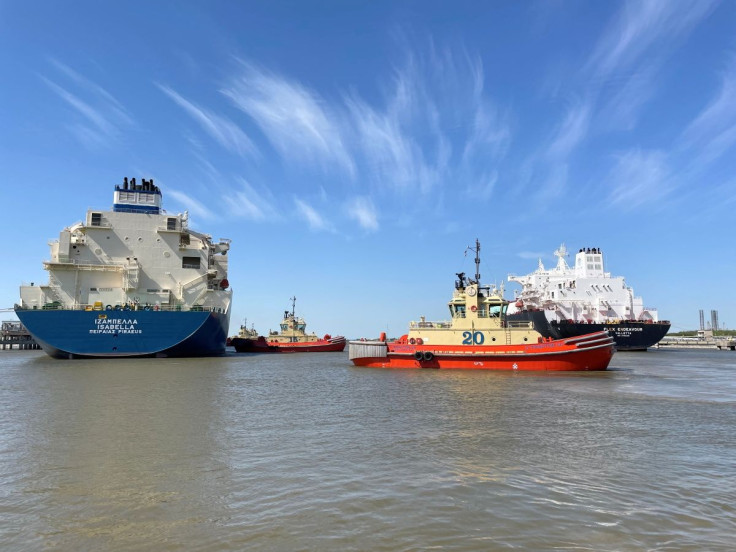Surging Natural Gas Prices Squeeze U.S. Industrial Sector

Skyrocketing natural gas prices have raised manufacturing and transportation costs across many U.S. industries, and the situation should persist as the United States exports more gas to Europe to make up for Russian supplies lost to sanctions.
U.S. natural gas futures have doubled this year, far more than the increases in retail gasoline and diesel that have made Americans angry at the U.S. energy industry and the government.
Many industrial company executives believe the United States, once a large importer of natural gas, should stop exporting gas and prioritize its own needs. But gas producers are pushing for more export capacity along with more permits for drilling.
Gas output in key locales in the United States has slowed this year, partly due to insufficient pipeline capacity. Bad weather also cut production and boosted demand.
Russia's invasion of Ukraine and subsequent sanctions have caused a scramble for U.S. exports of gas chilled to liquid form. U.S. liquefied natural gas (LNG) plants consumed 15% of domestic production in mid-March.
Higher gas prices are driving up costs for specialty chemical maker Huntsman Corp, which produces polyurethanes used to make electronics, building materials and furniture, Chief Executive Peter Huntsman told Reuters.
"Consumers are going to see (price) shocks," he said. The company has passed through more than $1.5 billion in raw material cost increases in the last year, he said, most due to energy.
Westlake Chemical, which makes plastics and building siding, calculates for every $1 per million British thermal units (mmBtu) increase in natural gas, its annual costs rise about $100 million.
"Inflation coming from energy is just the next insult to injury," adds Chip McElroy, chief executive of McElroy Manufacturing, which makes giant machines that fuse thermoplastic pipes.
U.S. natural gas futures have surged to $7.854 per mmBtu on Friday from $3.730 at the start of 2022 but remain far lower than Europe's benchmark of $31 and Asia's of $24 per mmBtu.
Surging demand from Europe, which is trying to wean itself off Russian imports, has analysts expecting prices will remain elevated.
"The manufacturing sector cannot invest and create jobs without assurances that our natural gas and electricity prices will not be imperiled by excessive LNG exports," Paul Cicio, president of he Industrial Energy Consumers of America (IECA), a trade group whose members include smelters, plastics and paper-goods makers, said last month in a letter to U.S. Energy Secretary Jennifer Granholm.The group wants Washington to stop approving LNG export permits until low U.S. gas stockpiles are rebuilt.
BIG HEATING BILLS
Some businesses are worried that heating bills could skyrocket next winter, noting that this year has not had the usual ebb in prices in the spring as heating demand dips.
Last winter's heating bills were unsustainable, said John Schmeiser, CEO of the Western Equipment Dealers Association, a trade group. "When you look at shop sizes of 30,000 to 40,000 square feet, that's a big natural gas bill."
Some companies have weathered the cost increases. Nucor, the largest U.S. steelmaker, has partially offset natural gas costs at its steel mills by selling some of the gas it produces for its own use, a spokesperson said.
LNG industry executives said high prices should spur new production. They want the Biden administration to approve new projects.
"There is a need not only for additional pipeline development but also for additional export facility development," said Dan Brouillette, president of Sempra Infrastructure, which develops LNG plants.
Most new projects would not come online until at least late next year or 2024, however.
Right now, U.S. gas futures would have to reach $20 per mmBtu to cool demand for U.S. LNG, said analyst Paul Sankey of Sankey Research.
"There is no upper bound on U.S. natural gas until we break the arbitrage for LNG exports," he said.
© Copyright Thomson Reuters 2024. All rights reserved.







